RB52-LT: Cold Weather Lithium Battery
12V 52Ah Lithium Deep Cycle Battery
The RB52-LT is a 12V 52Ah lithium battery and is part of RELiON’s Low-Temperature Series. This compact and powerful lithium iron phosphate battery is specially designed for cold weather performance. RELiON’s LT Series batteries can safely charge at temperatures down to -20°C (-4°F) using a standard charger. The system features proprietary technology which draws power from the charger itself, uniformly heating the cells within the battery to 41°F (5°C), so that it can be charged at its full recommended current. LT batteries require no additional components such as heating blankets.
The entire process of heating and charging with the LT Series is completely seamless. Simply plug the battery into the regular lithium charger and the internal heating and monitoring system takes care of the rest. Because it takes time to heat the cells, the charging process in below-freezing temperatures could take a little longer.
The Low-Temperature Series battery has the same size and performance as other RELiON batteries but can safely charge when temperatures drop as low as -20°C using a standard charger. The RB52-LT is a perfect choice for use in off-grid solar, remote monitoring, and in any application where charging in colder temperatures is necessary.
PRODUCT SPECIFICATIONS
- Voltage: 12.8V
- Amp Hours: 52Ah
DIMENSIONS & WEIGHT
- Length: 7.8 in (197 mm)
- Width: 6.5 in (166 mm)
- Height: 6.8 in (173 mm)
- Weight: 14.1 lbs (6.38 kg)
APPLICATIONS
- Backup Power
- Marine
- Recreational Vehicles
- Solar
- Camping
PRODUCT REVIEWS
DATA SHEET
DOWNLOAD PDFELECTRICAL SPECIFICATIONS |
|
|---|---|
| Nominal Voltage | 12.8 V |
| Nominal Capacity | 52 Ah |
| Capacity @ 25A | 120 min |
| Energy | 640 |
| Resistance | ≤50 mΩ @ 50% SOC |
| Efficiency | 99% |
| Self Discharge | <3% per Month |
| Maximum Modules in Series | 1 (Single-use) |
MECHANICAL SPECIFICATIONS |
|
|---|---|
| Dimensions (L x W x H) | 7.8 x 6.5 x 6.8” (197 x 166 x 173 mm) |
| Weight | 14.1 lbs (6.38 kg) |
| Terminal Type | M8 x 1.25 x 12mm |
| Terminal Torque | 80 - 100 in-lbs (9 - 11 N-m) |
| Case Material | ABS |
| Enclosure Protection | IP66 |
| Cell Type - Chemistry | Cylindrical - LiFePO4 |
DISCHARGE SPECIFICATIONS |
|
|---|---|
| Maximum Continuous Discharge Current | 50 A |
| Peak Discharge Current | 100 A (7.5 s ±2.5 s) |
| BMS Discharge Current Cut-Off | 150 A ±20 A (10 ±5 ms) |
| Recommended Low Voltage Disconnect | 11 V |
| BMS Discharge Voltage Cut-Off | 9.2 V (2.3 ±0.1 vpc) (140 ±60 ms) |
| Reconnect Voltage | 10 V (2.5 ±0.1 vpc) |
| Short Circuit Protection | 200-600 μs |
CHARGE SPECIFICATIONS |
|
|---|---|
| Recommended Charge Current | 2.5 A - 25 A |
| Maximum Charge Current | 50 A |
| Charge Current 14 to 32 ºF (-10 to 0 ºC) | ≤0.1 C |
| Charge Current -4 to 14 ºF (-20 to -10 ºC) | ≤0.05 C |
| Recommended Charge Voltage | 14.2 V - 14.6 V |
| BMS Charge Voltage Cut-Off | 15.4 V (3.85 ±0.025 vpc) (1.1 ±0.4 s) |
| Reconnect Voltage | 14.6V (3.65 ±0.05 vpc) |
| Balancing Voltage | 14.4 V (3.6 ±0.025 vpc) |
TEMPERATURE SPECIFICATIONS |
|
|---|---|
| Discharge Temperature | -4 to 140 ºF (-20 to 60 ºC) |
| Charge Temperature | -4 to 113 ºF (-20 to 45 ºC) |
| Storage Temperature | 23 to 95 ºF (-5 to 35 ºC) |
| BMS High Temperature Cut-Off | 176 ºF (80 ºC) |
| Reconnect Temperature | 122 ºF (50 ºC) |
HEATING ELEMENT SPECIFICATIONS |
|
|---|---|
| Heating Temperature Range | -4 to 41 ºF (-20 to 10 ºC) |
| Heating Time | 1 hr @ 4 A |
COMPLIANCE SPECIFICATIONS |
|
|---|---|
| Certifications | UN38.3 (battery) |
| CE (battery) | |
| UL1642 (cells) (File# MH64523) | |
| IEC62133 (cells) | |
| Shipping Classification | UN 3480, CLASS 9 |
PERFORMANCE SPECIFICATIONS
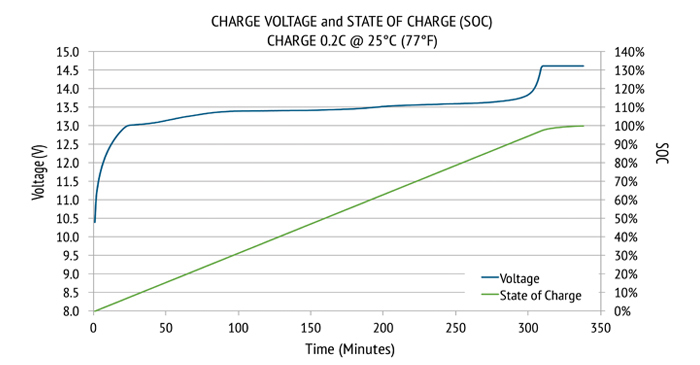
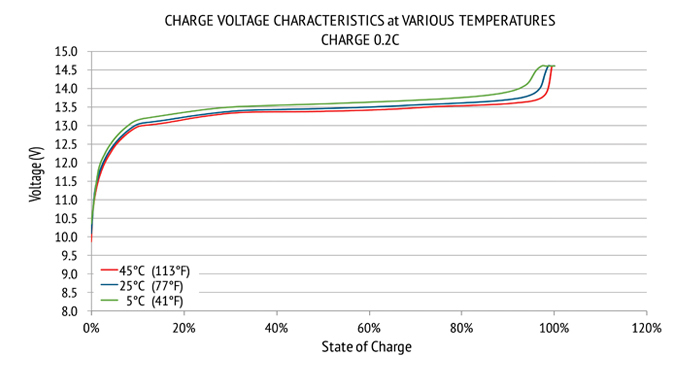
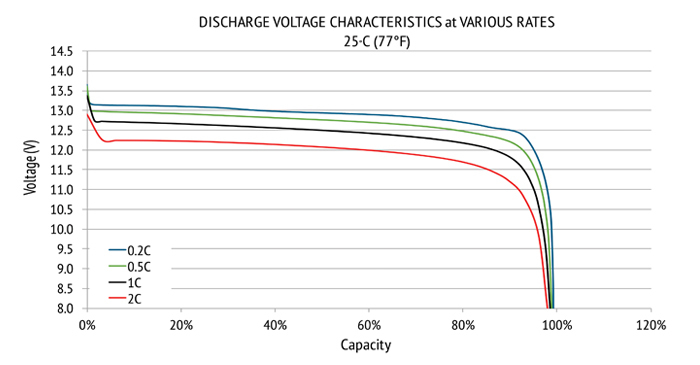
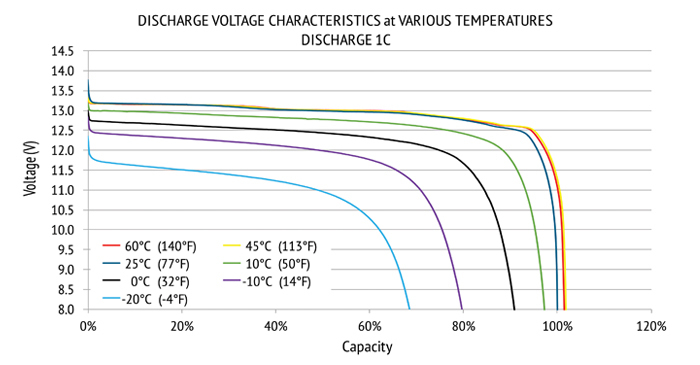
Check Out the RB52-LT & RB300-LT
RELiON's Low Temperature Series batteries have been a hit with remote monitoring, off-grid enthusiasts, RV adventurers and more. So, we’ve decided to add two new models in this unique lineup. Learn more about the RB52-LT and RB300-LT and their suggested applications!
Tech Tuesday | Low Temperature Series
When temperatures dip below freezing, you need to make sure your battery can stay warm and charge the way it normally does. In this Tech Tuesday, we're discussing RELiON's LT Series and how to use our batteries in colder temperatures. Be ready to prep your set-up for winter!
Frequently Asked Questions


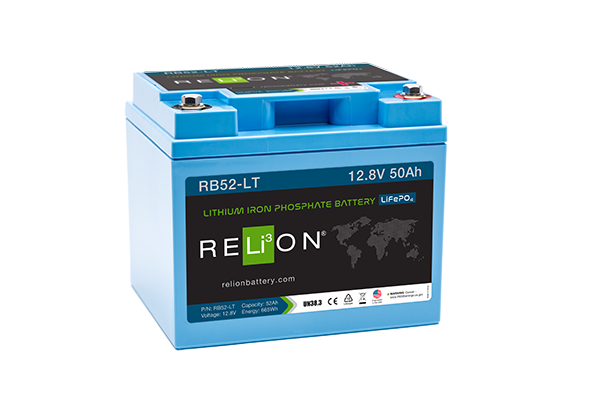
There are no reviews for this product yet.